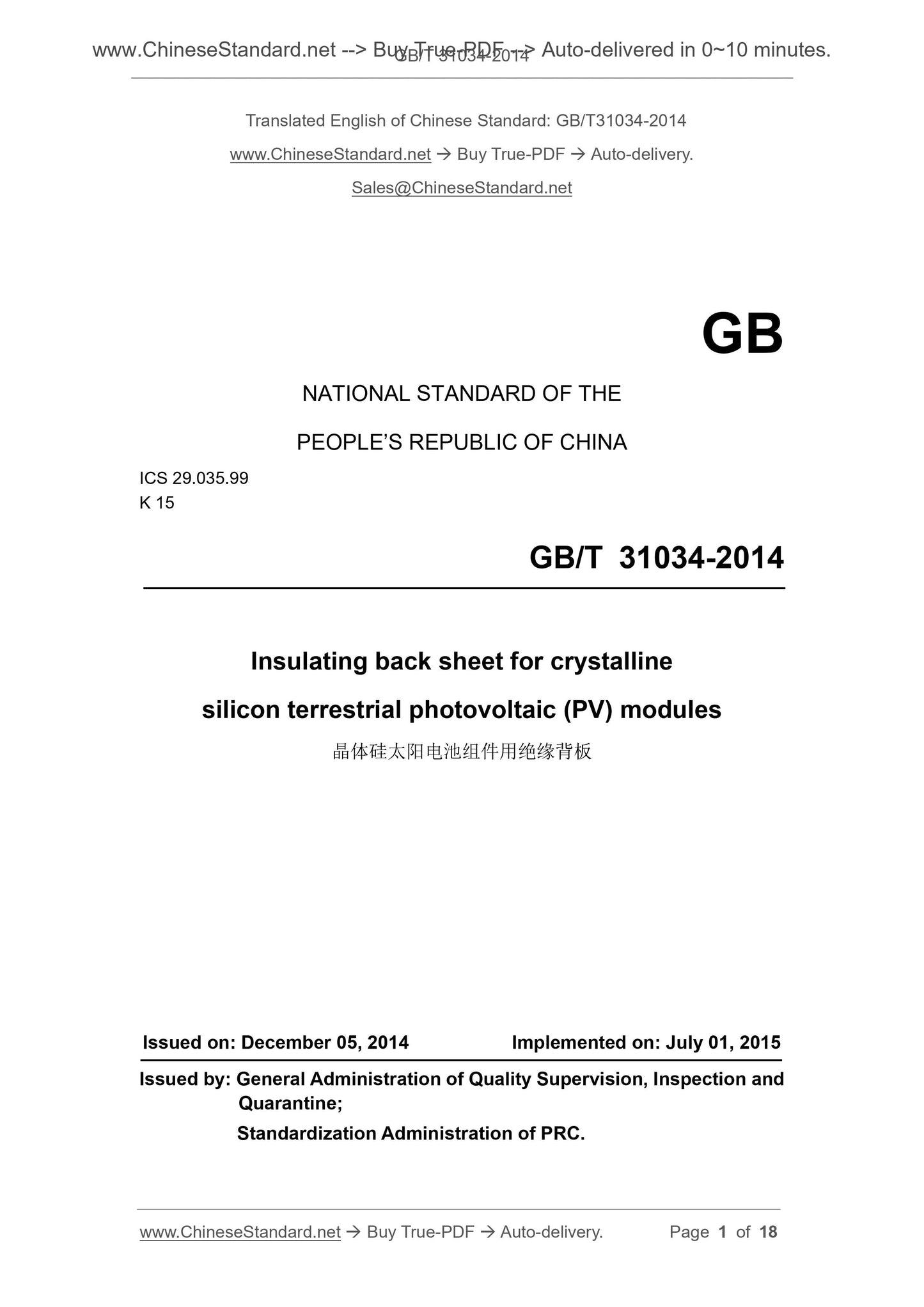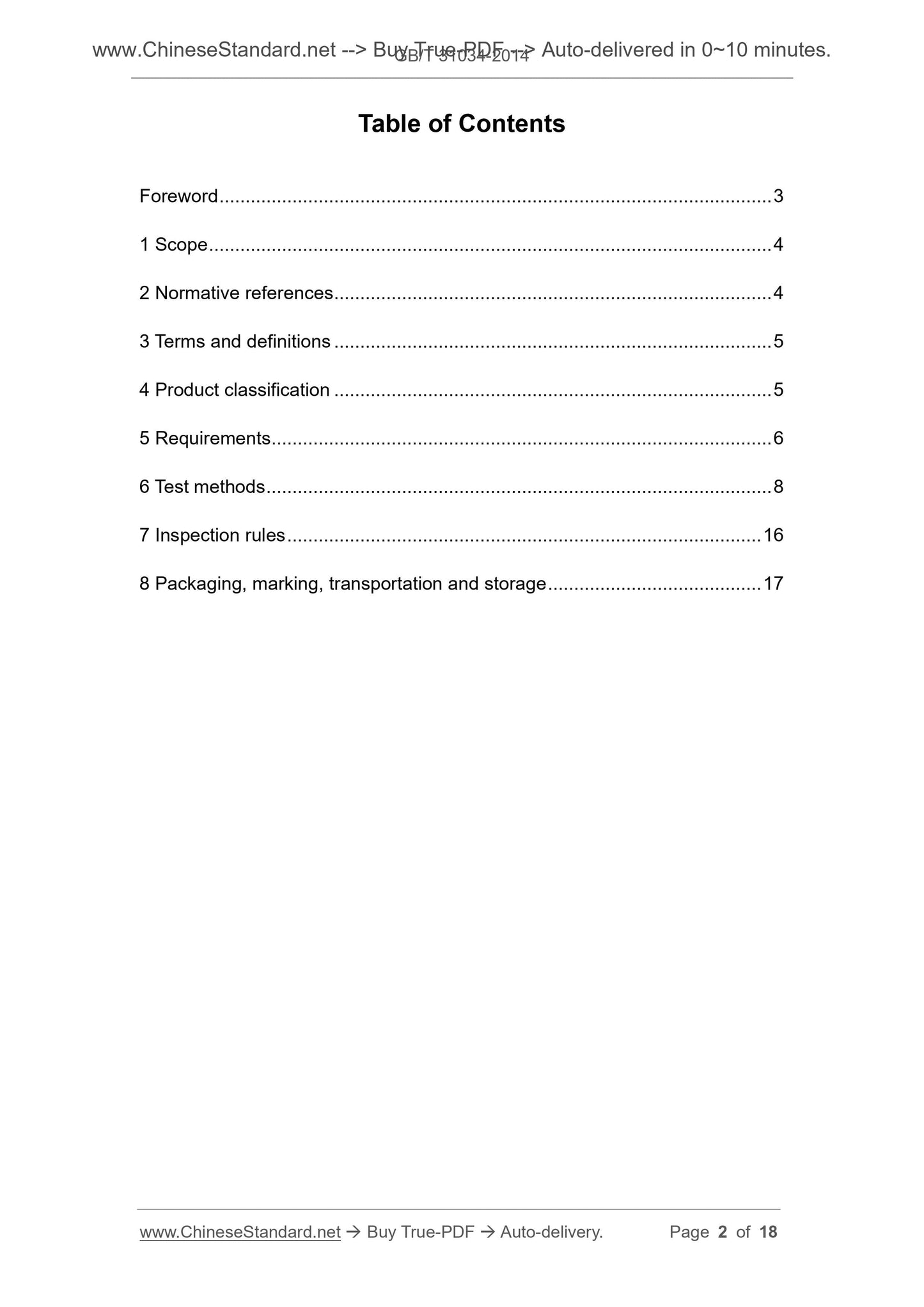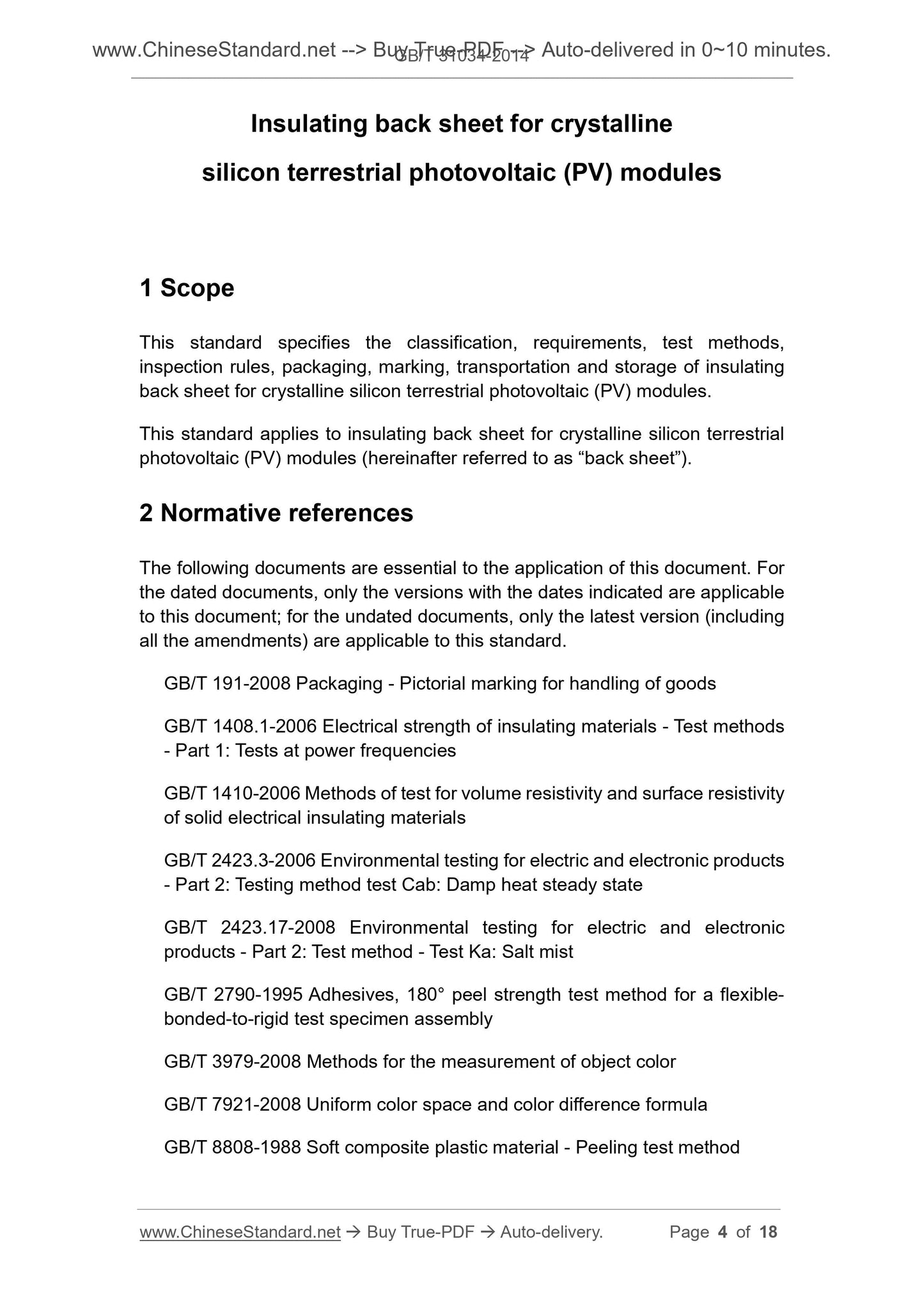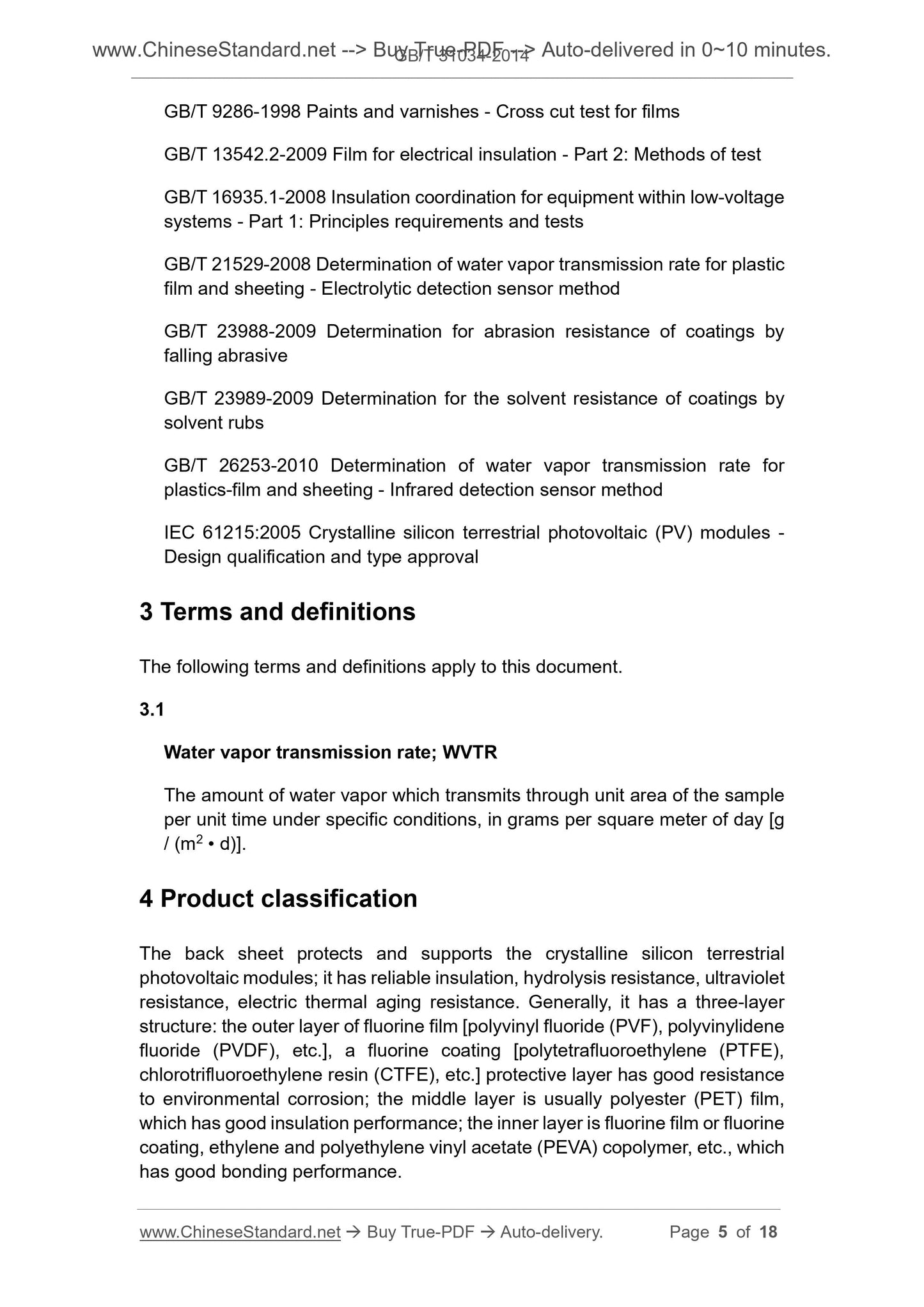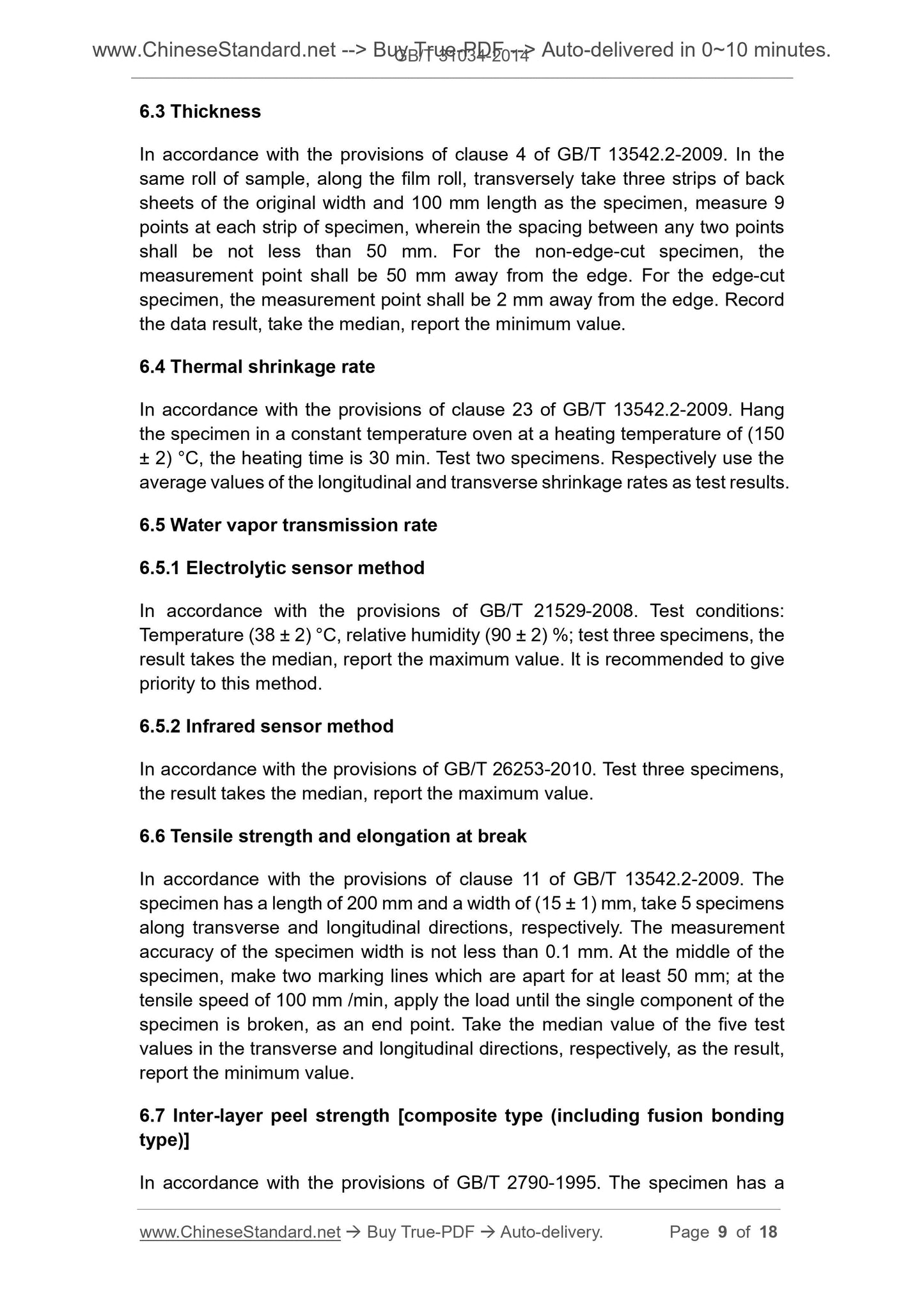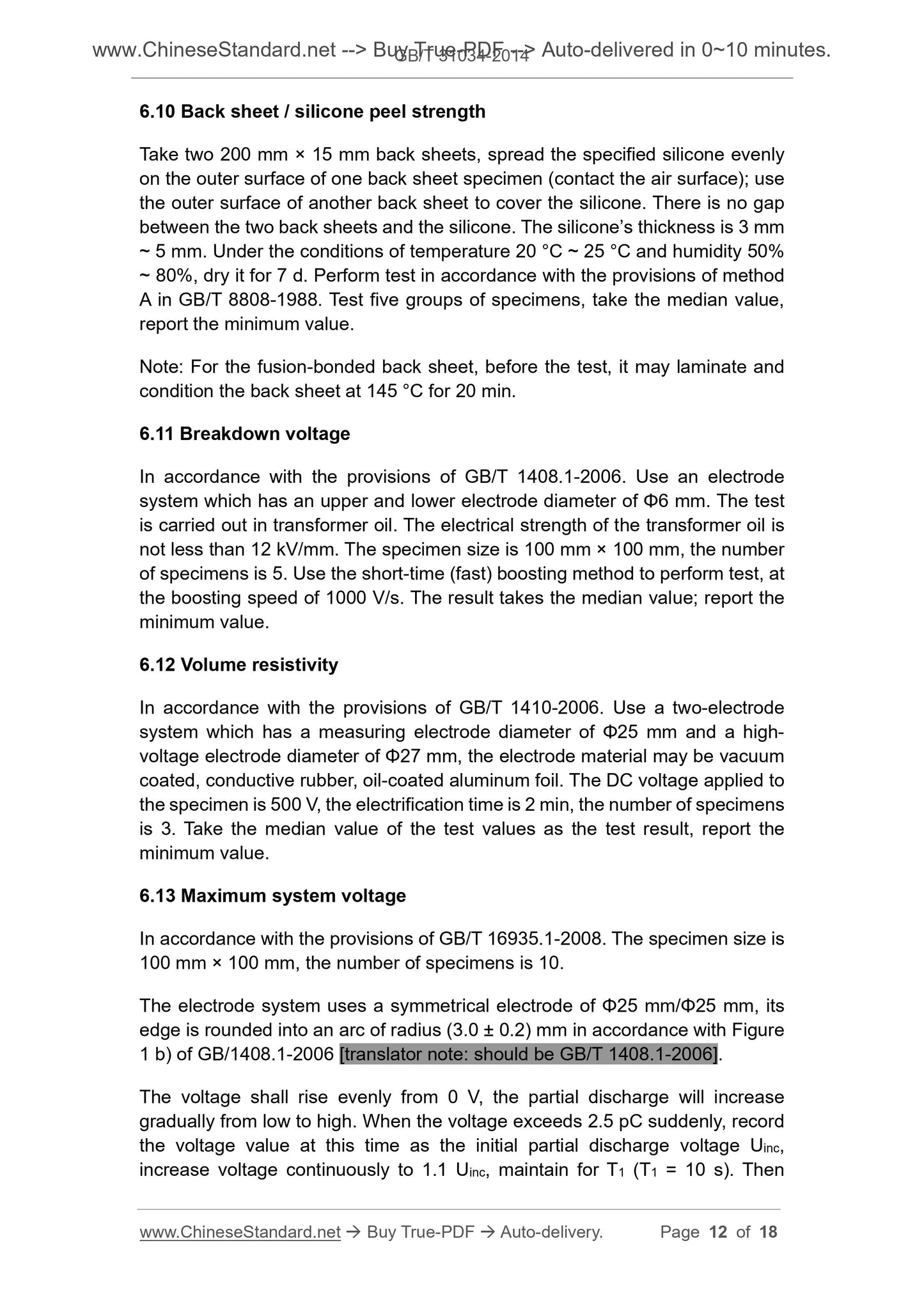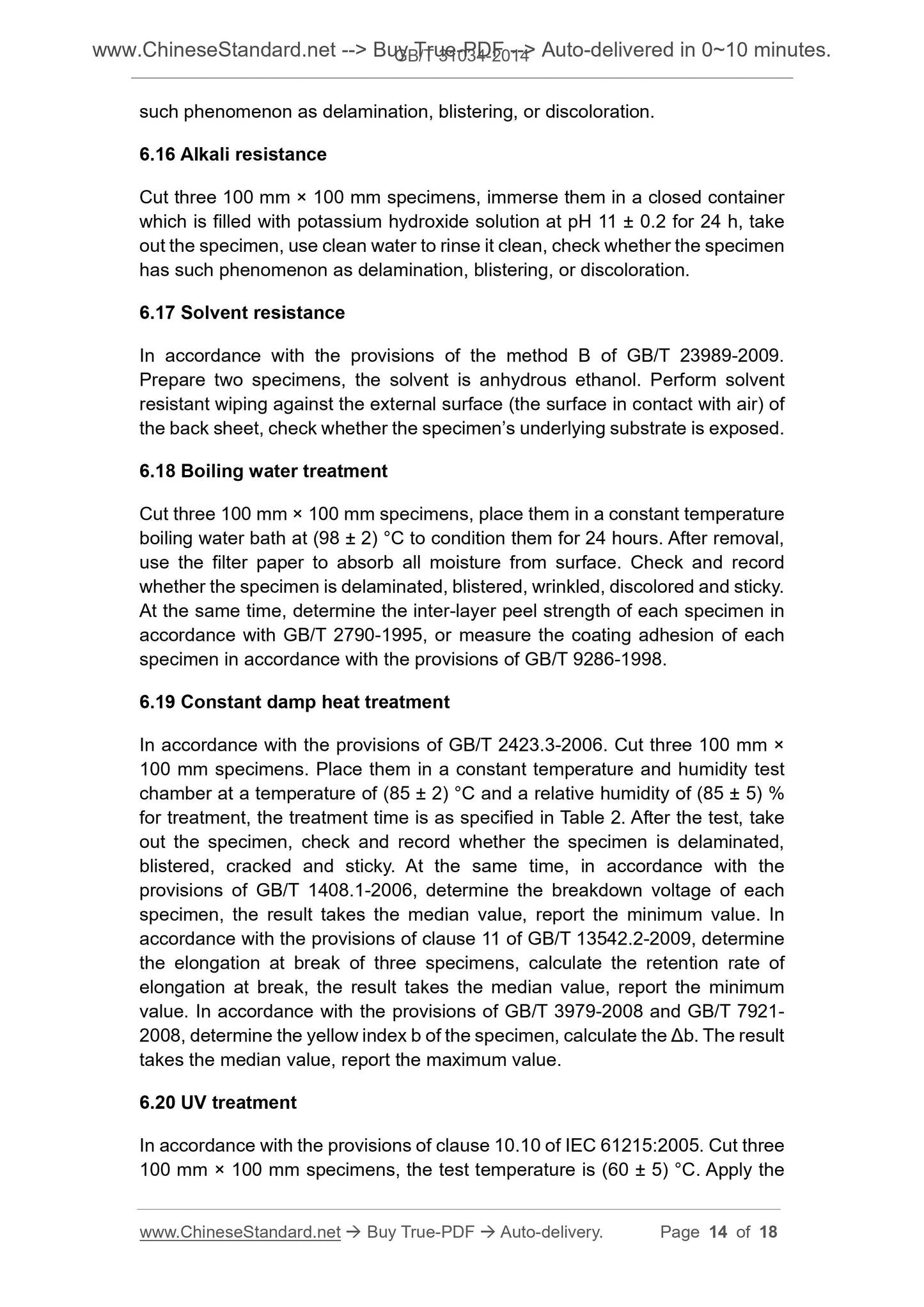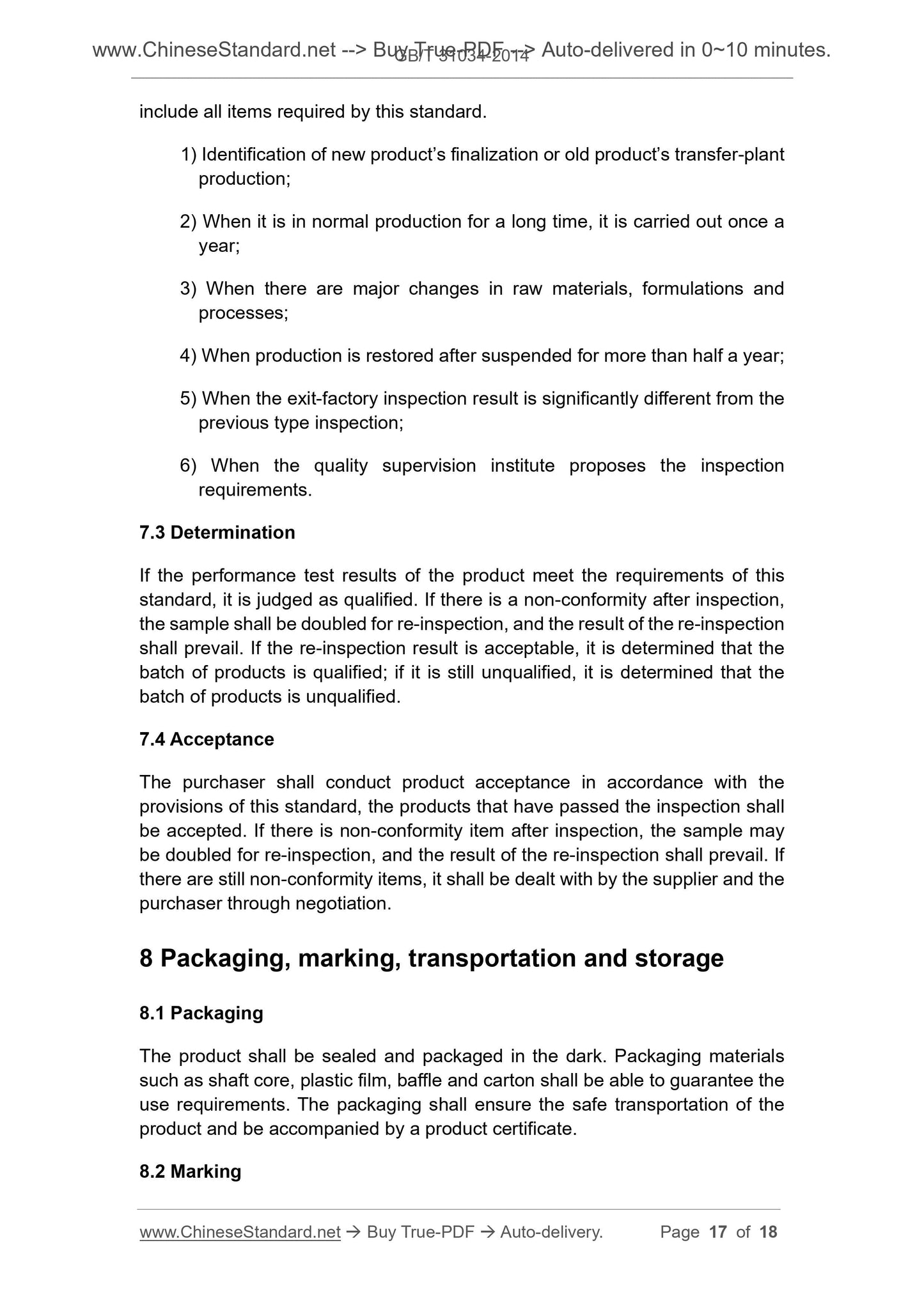1
/
of
8
www.ChineseStandard.us -- Field Test Asia Pte. Ltd.
GB/T 31034-2014 English PDF (GB/T31034-2014)
GB/T 31034-2014 English PDF (GB/T31034-2014)
Regular price
$145.00
Regular price
Sale price
$145.00
Unit price
/
per
Shipping calculated at checkout.
Couldn't load pickup availability
GB/T 31034-2014: Insulating back sheet for crystalline silicon terrestrial photovoltaic (PV) modules
Delivery: 9 seconds. Download (and Email) true-PDF + Invoice.Get Quotation: Click GB/T 31034-2014 (Self-service in 1-minute)
Newer / historical versions: GB/T 31034-2014
Preview True-PDF
Scope
This standard specifies the classification, requirements, test methods,inspection rules, packaging, marking, transportation and storage of insulating
back sheet for crystalline silicon terrestrial photovoltaic (PV) modules.
This standard applies to insulating back sheet for crystalline silicon terrestrial
photovoltaic (PV) modules (hereinafter referred to as “back sheet”).
Basic Data
| Standard ID | GB/T 31034-2014 (GB/T31034-2014) |
| Description (Translated English) | Insulating back sheet for crystalline silicon terrestrial photovoltaic (PV) modules |
| Sector / Industry | National Standard (Recommended) |
| Classification of Chinese Standard | K15 |
| Classification of International Standard | 29.035.99 |
| Word Count Estimation | 14,117 |
| Date of Issue | 12/5/2014 |
| Date of Implementation | 7/1/2015 |
| Quoted Standard | GB/T 191-2008; GB/T 1408.1-2006; GB/T 1410-2006; GB/T 2423.3-2006; GB/T 2423.17-2008; GB/T 2790-1995; GB/T 3979-2008; GB/T 7921-2008; GB/T 8808-1988; GB/T 9286-1998; GB/T 13542.2-2009; GB/T 16935.1-2008; GB/T 21529-2008; GB/T 23988-2009; GB/T 23989-2009; |
| Regulation (derived from) | Announcement of Newly Approved National Standards 2014 No. 27 |
| Issuing agency(ies) | General Administration of Quality Supervision, Inspection and Quarantine of the People's Republic of China, Standardization Administration of the People's Republic of China |
| Summary | This Standard specifies crystalline silicon solar modules with insulating backplane classification, requirements, test methods, inspection rules, packaging, labeling, transport and storage. This Standard is applicable to crystalline silicon solar modules |
Share
